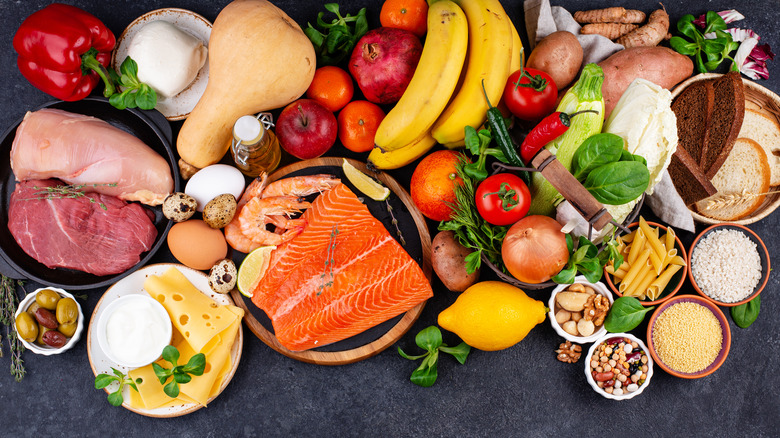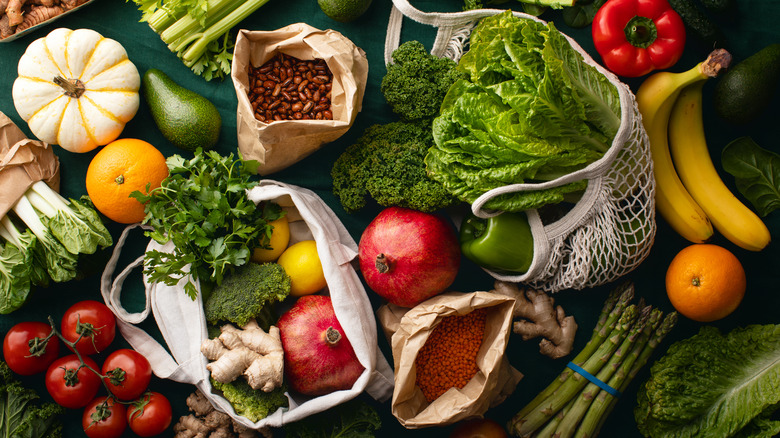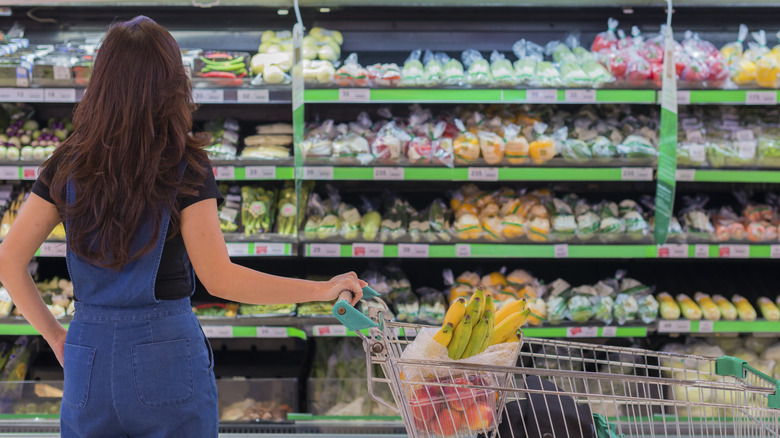What Recent CDC Report Says About US Diets May Surprise You
Ever since you were a kid, chances are you've heard people talk about how everyone should eat more fruits and vegetables. Apart from their rather obvious health benefits, different types of produce are packed with the vitamins and minerals the body needs to function well. Though you might have heard that Americans need to incorporate more fruits and vegetables into their diets, the latest report from the Centers for Disease Control and Prevention (CDC) found that a shockingly low number of Americans eat the recommended quantities of fruits and vegetables.
According to the CDC, the Dietary Guidelines for Americans set for 2020 to 2025 suggests Americans eat one and a half to two cups of fruit each day and an additional two to three cups of vegetables. But the CDC's recent report found that a mere 12% of people actually consume the suggested amount of fruit and only 10% ate the number of vegetables needed for a healthy diet. While the number of people meeting their daily needs for fruits and vegetables is surprisingly low, the breakdown of those percentages could be just as eye-opening.
This is how those percentages break down
Though the percentages of people who eat the necessary amounts of fruits and vegetables are already slim, the breakdown of those findings paints a clear picture of eating habits in the U.S. According to the CDC, Hispanic adults were the highest demographic to consume the recommended amount of fruit, with an average of 16.4%. As for vegetables, those identifying as male were the least likely to eat enough vegetables, and just barely passed 10%. Those who identify as female are more likely than men to eat enough of both fruits and vegetables, and those who are 51 or older are the most likely to eat enough vegetables, while younger individuals are far less likely to consistently eat vegetables. Not to mention, those who live near or below the poverty line are far less likely to eat enough produce.
While is may be easy to simply blame people living in the U.S. for not living up to the CDC recommendations, the reason people skip their daily fruits and vegetables is more complicated.
The reason people eat so little produce isn't simple
Though it might be tempting to assume that people living in the U.S. simply have a love of unhealthy foods or that Americans tend to eat out more rather than cook at home, those are only part of the problem, reports Vox. Fruits and vegetables can be more expensive than other processed foods and snacks, meaning those closer to the poverty line may be unable to afford them regularly. The lack of variety in the fruits and vegetables Americans tend to buy — which is primarily tomatoes and potatoes — is also an issue.
Then there is the problem of food deserts, which are areas that tend to be low-income and lack stores that offer healthier food options. (Healthline shares that, according to some studies, "half of all low-income neighborhoods in the United States are food deserts.") So, while it might seem easy enough for more Americans to add more produce to their daily routine, the issue is actually much larger than simply changing eating habits.


